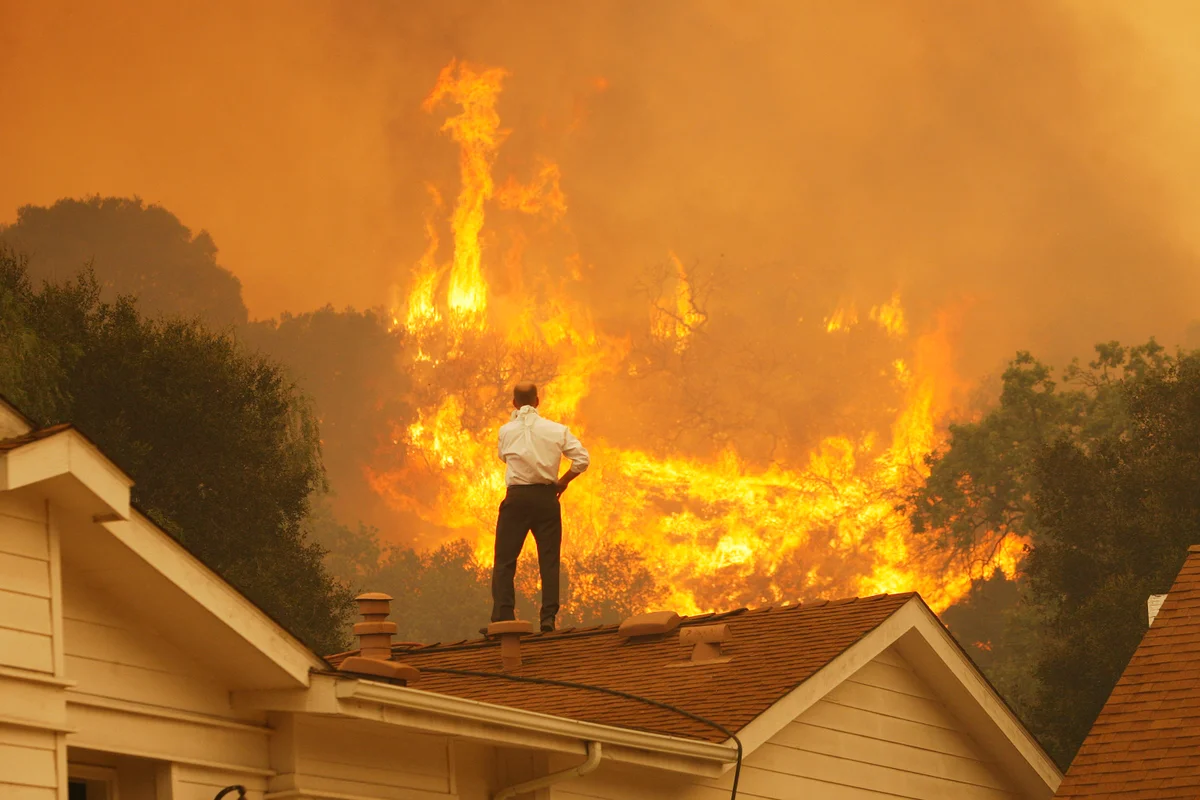Contents
- 1 Section 1: Understanding the Climatic Emergency
- 2 Section 2: Causes of Climate Change
- 3 Section 3: The Role of Human Activities
- 4 Section 4: Impacts on Ecosystems
- 5 Section 5: Societal Consequences
- 6 Section 6: Global Policy and Agreements
- 7 Section 7: Innovations and Solutions
- 8 Section 8: Individual and Collective Action
- 9 Section 9: The Role of Businesses and Industries
- 10 Section 10: Building Resilience and Adaptation
Climatic Emergency – Welcome to our blog where we delve into the pressing issue of the climatic emergency that the world is currently facing. In this article, we will explore the urgent need for action in order to combat climate change and its devastating effects on our planet. With rising global temperatures, melting ice caps, and extreme weather events becoming increasingly common, it is crucial to understand the gravity of the situation and the role we all play in addressing this crisis. So, let’s delve into the facts, examine the causes, and discuss potential solutions to tackle this climatic emergency head-on.
Section 1: Understanding the Climatic Emergency
The world is currently grappling with a climatic emergency of unprecedented proportions. Rising global temperatures, melting ice caps, and extreme weather events have become alarmingly common, signaling the urgent need for action. To address this crisis effectively, it is crucial to understand its magnitude and implications.
The State of the Climate Crisis
The climatic emergency is characterized by a series of interrelated phenomena that are disrupting the Earth’s natural balance. Global temperatures have been steadily rising, with the past few decades being the warmest on record. This increase in temperature is causing glaciers and ice caps to melt at an alarming rate, leading to rising sea levels.
Beyond the rising temperatures, the climate crisis has also resulted in a surge of extreme weather events. Hurricanes, droughts, heatwaves, and floods have become more frequent and intense, causing widespread devastation and loss of life. These events not only directly impact communities but also contribute to economic instability and displacement.
The Impact on Biodiversity
The climatic emergency poses a significant threat to biodiversity and ecosystems worldwide. Rapid climate change disrupts delicate ecosystems, affecting the distribution and behavior of plant and animal species. Coral reefs, for example, are experiencing bleaching events due to rising ocean temperatures, leading to the loss of vital habitats for marine life.
Furthermore, the alarming rate of species extinction is directly linked to the climate crisis. As habitats degrade and become inhospitable, many species struggle to survive and adapt. This loss of biodiversity has far-reaching consequences, including disruptions in ecosystems, reduced pollination, and imbalances in natural cycles.
The Human Toll
While the climatic emergency affects all living organisms, it disproportionately impacts vulnerable communities around the world. Rising temperatures and changing rainfall patterns directly affect agriculture, leading to food and water scarcity. These challenges, coupled with the increased frequency of extreme weather events, exacerbate poverty, hunger, and displacement.
Furthermore, the health impacts of climate change cannot be overlooked. Heatwaves, air pollution, and the spread of vector-borne diseases pose significant risks to human health. Vulnerable populations, including children, the elderly, and those with pre-existing health conditions, are particularly at risk.
It is essential to acknowledge that the effects of the climatic emergency are not limited to a particular region or country. The interconnectedness of our planet means that no one is immune to the consequences of climate change. Therefore, it is imperative that we take immediate action to mitigate and adapt to this crisis.
Section 2: Causes of Climate Change
To effectively address the climatic emergency, it is crucial to understand the underlying causes driving climate change. Several interconnected factors contribute to the escalating crisis we face today.
Greenhouse Gas Emissions
One of the primary drivers of climate change is the excessive release of greenhouse gases into the atmosphere. These gases, including carbon dioxide (CO2), methane (CH4), and nitrous oxide (N2O), trap heat and contribute to the greenhouse effect. The burning of fossil fuels for energy generation, transportation, and industrial processes is the largest source of CO2 emissions.
In addition to fossil fuel combustion, deforestation and land-use changes also contribute significantly to greenhouse gas emissions. Forests act as carbon sinks, absorbing CO2 from the atmosphere. However, when forests are cleared for agriculture, urbanization, or logging, the stored carbon is released, exacerbating the climate crisis.
Industrial Activities
Industrial processes, particularly in sectors such as manufacturing, mining, and construction, release substantial amounts of greenhouse gases. These emissions result from the production and use of materials like cement, steel, and chemicals. Additionally, the extraction and processing of natural resources contribute to the carbon footprint of industries.
Industrial activities are also associated with other environmental issues, such as pollution of air, water, and soil. The cumulative impact of these activities intensifies the climatic emergency and necessitates a shift towards sustainable production methods and cleaner technologies.
Agriculture and Livestock
Agricultural practices, particularly intensive and unsustainable farming methods, contribute to climate change. The use of synthetic fertilizers and pesticides releases nitrous oxide, a potent greenhouse gas. Additionally, certain agricultural practices lead to soil degradation and loss, reducing its capacity to sequester carbon.
Livestock farming, especially large-scale commercial operations, accounts for a significant share of methane emissions. Ruminant animals, such as cows and sheep, produce methane during digestion, contributing to the greenhouse effect. Sustainable agricultural practices and the adoption of regenerative farming techniques can play a crucial role in mitigating these emissions.
Population Growth and Urbanization
The world’s growing population and rapid urbanization contribute to increased energy consumption and carbon emissions. As more people migrate to cities and urban areas expand, the demand for energy, transportation, and infrastructure rises. This puts additional pressure on natural resources and contributes to the climatic emergency.
Managing population growth, promoting sustainable urban planning, and investing in renewable energy infrastructure are essential steps towards mitigating the effects of climate change.
Understanding these underlying causes of climate change is vital in formulating effective strategies and policies to address the climatic emergency. By targeting these root causes, we can work towards a sustainable future for our planet and future generations.
Section 3: The Role of Human Activities
Human activities have played a significant role in exacerbating the climatic emergency we currently face. Our choices and behaviors contribute to the emission of greenhouse gases and the degradation of the environment, intensifying the effects of climate change.
Excessive Consumption and Waste
The culture of excessive consumption prevalent in many societies is a major driver of climate change. The demand for goods and services results in increased production, resource extraction, and energy consumption. This, in turn, leads to higher greenhouse gas emissions and environmental degradation.
Furthermore, the improper disposal of waste, particularly non-biodegradable materials like plastic, contributes to pollution and the release of harmful gases. Reducing consumption, practicing waste reduction, and embracing sustainable alternatives are crucial steps towards mitigating the impact of human activities on the environment.
Reliance on Fossil Fuels
The widespread reliance on fossil fuels for energy generation is one of the primary contributors to the climatic emergency. Burning fossil fuels releases large amounts of CO2 into the atmosphere, intensifying the greenhouse effect. This reliance on non-renewable energy sources such as coal, oil, and natural gas also contributes to air pollution, respiratory diseases, and environmental degradation.
Transitioning to renewable energy sources, such as solar, wind, and hydroelectric power, is essential for reducing greenhouse gas emissions and combating climate change. Investing in clean energy technologies and supporting the development of sustainable infrastructure are critical steps in this direction.
Unsustainable Agricultural Practices
The agricultural sector, particularly conventional and industrial farming practices, contributes significantly to the climatic emergency. The use of chemical fertilizers and pesticides not only releases greenhouse gases but also pollutes water sources and degrades soil quality.
In addition, large-scale monoculture farming and deforestation for agricultural expansion contribute to habitat loss, biodiversity decline, and increased greenhouse gas emissions. Embracing sustainable agricultural practices, such as organic farming, agroforestry, and regenerative agriculture, can help restore ecosystems, sequester carbon, and reduce the environmental impact of food production.
Lack of Environmental Awareness and Action
A lack of environmental awareness and collective action further exacerbates the climatic emergency. The failure to recognize the gravity of the situation and the urgency for change hinders progress in addressing climate change.
However, increasing awareness and education about the impacts of human activities on the environment can drive positive change. Empowering individuals, communities, and organizations with knowledge and resources to adopt sustainable practices and advocate for policy changes is crucial in combating the climatic emergency.
Recognizing the role of human activities in driving climate change is essential for taking responsibility and initiating meaningful change. By making conscious choices and embracing sustainable practices, we can collectively mitigate the impact of our actions on the environment and work towards a more sustainable future.
Section 4: Impacts on Ecosystems
The climatic emergency is causing significant disruptions to ecosystems worldwide, with far-reaching consequences for biodiversity and the delicate balance of our planet’s natural systems.
Biodiversity Loss
Climate change is a major driver of biodiversity loss. As temperatures rise and weather patterns change, many species struggle to adapt or migrate to suitable habitats. This leads to a decline in biodiversity, as some species may become extinct, disrupting the intricate web of life.
The loss of biodiversity has cascading effects on ecosystems. It disrupts pollination, reduces food availability, and affects predator-prey relationships. This, in turn, can lead to imbalances in ecosystems and a loss of resilience in the face of further environmental changes.
Habitat Destruction
The climatic emergency exacerbates habitat destruction, further threatening vulnerable ecosystems. Rising sea levels and increased coastal erosion pose a significant threat to coastal habitats, such as mangroves and salt marshes, which provide critical protection against storms and serve as nurseries for numerous marine species.
Inland, the melting of glaciers and reduced snowpack affect freshwater ecosystems, impacting the availability of water for plants, animals, and human communities. Additionally, the destruction and fragmentation of forests due to climate change and human activities disrupt habitats for countless species, leading to population declines and potential extinctions.
Disruption of Ecosystem Services
Ecosystems provide essential services that support human well-being. Climate change disrupts these services, putting human communities at risk. For example, the loss of coral reefs due to rising ocean temperatures not only affects marine biodiversity but also reduces coastal protection from storms and provides fewer opportunities for tourism and recreation.
Similarly, changes in precipitation patterns and the melting of glaciers impact water availability for agriculture, drinking water, and hydroelectric power generation, with cascading effects on food security and energy supply.
Feedback Loops and Tipping Points
Climate change also triggers feedback loops and tipping points in ecosystems. For example, the melting of Arctic sea ice reduces its reflective surface, leading to increased absorption of solar radiation and further warming. This phenomenon accelerates the rate of climate change and has far-reaching consequences for Arctic ecosystems and beyond.
Similarly, the release of stored carbon from thawing permafrost and dying forests can create a positive feedback loop, where increased greenhouse gas emissions further contribute to climate change. These feedback loops and tipping points have the potential to amplify the impacts of the climatic emergency, making mitigation efforts even more challenging.
Understanding the impacts of climate change on ecosystems is crucial for developing effective conservation strategies and preserving the delicate balance of our planet’s biodiversity. By protecting and restoring ecosystems, we can enhance their resilience and contribute to the overall mitigation of the climatic emergency.
Section 5: Societal Consequences
The climatic emergency has far-reaching societal consequences, impacting various aspects of human life and exacerbating existing vulnerabilities and inequalities.
Food and Water Scarcity
Climate change disrupts agricultural systems, leading to reduced crop yields and food scarcity. Changing rainfall patterns, prolonged droughts, and increased frequency of extreme weather events pose significant challenges to farmers and food production. This, in turn, threatens food security, particularly in regions that heavily rely on agriculture for livelihoods and sustenance.
Additionally, the availability of clean and safe water is also at risk due to climate change. Changing precipitation patterns and rising temperatures can lead to water scarcity, making it challenging for communities to access an adequate and reliable water supply.
Health Risks
The climatic emergency poses significant health risks to communities around the world. Heatwaves, exacerbated by rising temperatures, can lead to heat-related illnesses and even deaths, particularly among vulnerable populations.
Climate change also influences the spread of vector-borne diseases, such as malaria, dengue fever, and Lyme disease. Changing climate conditions can expand the geographical range of disease-carrying vectors, exposing new populations to these diseases.
Forced Migration and Displacement
As climate change impacts worsen, many communities face the harsh reality of displacement and forced migration. Rising sea levels, coastal erosion, and intensified storms threaten low-lying coastal areas and island nations, displacing communities and rendering their homes uninhabitable.
Additionally, the loss of agricultural productivity and access to water resources can lead to internal migration as people seek better opportunities and resources. These forced migrations place additional strain on already vulnerable communities and can lead to social and economic instability.
Environmental and Social Justice
The climatic emergency exacerbates existing inequalities and disproportionately affects marginalized communities. Vulnerable populations, including low-income communities, indigenous peoples, and racial minorities, often bear the brunt of the impacts.
Environmental and social justice are critical in addressing the inequities associated with climate change. It is essential to ensure that solutions and policies consider the needs and perspectives of all communities, especially those most affected by the climatic emergency.
The societal consequences of climate change require urgent attention and action. By implementing sustainable and equitable strategies, we can mitigate the impacts and build resilient communities that are better prepared to face the challenges of the climatic emergency.
Section 6: Global Policy and Agreements
Addressing the climatic emergency requires global cooperation and the implementation of effective policies and agreements. International efforts have been made to combat climate change and mitigate its impacts.
The Paris Agreement
The Paris Agreement, adopted in 2015 by nearly every country in the world, is a landmark international agreement aimed at limiting global warming to well below 2 degrees Celsius above pre-industrial levels. The agreement emphasizes the need to pursue efforts to limit the temperature increase to 1.5 degrees Celsius.
Under the Paris Agreement, countries commit to regularly reporting their emissions and implementing measures to reduce greenhouse gas emissions. The agreement also provides support for climate adaptation and mitigation efforts, particularly for developing countries.
Nationally Determined Contributions (NDCs)
As part of the Paris Agreement, countries submit their Nationally Determined Contributions (NDCs), outlining their specific climate goals and actions. These contributions include targets for reducing emissions, adapting to climate change, and providing financial and technical support to other countries.
Regular updates of these contributions are expected to increase ambition over time, as countries strive to enhance their climate actions and contribute to global efforts in addressing the climatic emergency.
Intergovernmental Panel on Climate Change (IPCC)
The Intergovernmental Panel on Climate Change (IPCC) plays a crucial role in assessing scientific knowledge related to climate change. It provides policymakers with comprehensive reports on the latest climate research and projections, serving as a key source of information for policy formulation.
The IPCC’s reports highlight the urgency of taking immediate and coordinated action to address the climatic emergency and provide recommendations for mitigation, adaptation, and resilience-building measures.
Global Climate Funds
International funds, such as the Green Climate Fund (GCF) and the Adaptation Fund, have been established to support developing countries in their efforts to address climate change. These funds provide financial resources for climate adaptation and mitigation projects, technology transfer, capacity-building, and resilience-building measures.
Global climate funds aim to mobilize and allocate resources to support vulnerable countries in their transition to low-carbon and climate-resilient development pathways, ensuring that no one is left behind in the fight against the climatic emergency.
Global policy and agreements provide a framework for collective action and cooperation in addressing the climatic emergency. By adhering to these agreements and implementing effective policies, we can create a path towards a sustainable and resilient future for our planet.
Section 7: Innovations and Solutions
A glimmer of hope amidst the climatic emergency lies in the innovative solutions and technologies that are emerging to combat climate change. These advancements offer promising possibilities for reducing greenhouse gas emissions and building a sustainable future.
Renewable Energy
Renewable energy sources, such as solar, wind, hydro, and geothermal power, are key in transitioning away from fossil fuels and reducing greenhouse gas emissions. Continued advancements in renewable energy technologies have made them more efficient, affordable, and accessible.
Investments in renewable energy infrastructure, coupled with supportive policies, can accelerate the transition to a low-carbon energy system. By harnessing the power of renewable energy, we can significantly reduce our reliance on fossil fuels and mitigate the climatic emergency.
Sustainable Transportation
The transportation sector is a major contributor to greenhouse gas emissions. However, advancements in electric vehicles (EVs), improved public transportation systems, and the development of alternative fuels offer sustainable solutions.
Increasing the adoption of EVs, expanding charging infrastructure, and promoting public transportation can help reduce emissions from the transportation sector. Additionally, initiatives such as carpooling, biking, and walking promote sustainable and low-carbon mobility options.
Energy Efficiency
Improving energy efficiency is crucial in reducing energy consumption and lowering greenhouse gas emissions. Energy-efficient technologies and practices, such as smart grids, energy-efficient buildings, and appliances, play a significant role in achieving this goal.
Investments in energy-efficient infrastructure and the implementation of energy-saving measures can lead to substantial reductions in energy consumption and greenhouse gas emissions. By optimizing energy use, we can make significant strides in mitigating the climatic emergency.
Sustainable Agriculture and Land Use
A shift towards sustainable agricultural practices is essential for reducing emissions and building climate resilience. Techniques such as organic farming, agroforestry, and regenerative agriculture promote soil health, sequester carbon, and reduce the use of synthetic inputs.
Furthermore, sustainable land management practices, including reforestation, afforestation, and forest conservation, can help capture and store carbon dioxide, mitigating climate change.
Circular Economy
The circular economy aims to minimize waste and maximize resource efficiency. By promoting the reuse, recycling, and repurposing of materials, the circular economy reduces the need for resource extraction and minimizes the associated greenhouse gas emissions.
Adopting circular economy principles in various sectors, including manufacturing, construction, and consumer products, can significantly contribute to reducing the climatic emergency.
Innovations and solutions provide hope in the face of the climatic emergency. By embracing and scaling up these advancements, we can transition toward a sustainable and resilient future for our planet.
Section 8: Individual and Collective Action
Addressing the climatic emergency requires both individual and collective action. Each person has a role to play in reducing their carbon footprint and advocating for change. Together, we can make a significant impact in combating climate change.
Reducing Personal Emissions
Individuals can reduce their carbon emissions by making conscious choices in their daily lives. This includes adopting energy-saving habits, such as turning off lights and appliances when not in use, using public transportation or carpooling, and embracing energy-efficient technologies in homes.
Additionally, reducing meat consumption, embracing plant-based diets, and supporting local and sustainable food sources can contribute to lowering greenhouse gas emissions associated with food production.
Promoting Sustainable Practices
Advocating for sustainable practices is essential in driving change at a larger scale. Encouraging others to adopt renewable energy, supporting businesses that prioritize sustainability, and participating in community initiatives can create a ripple effect and inspire others to take action.
Furthermore, supporting policies and organizations that promote sustainability, advocating for stronger environmental regulations, and engaging in discussions on climate change can help raise awareness and drive systemic change.
Education and Awareness
Education plays a vital role in raising awareness about the climatic emergency. By staying informed about the latest scientific research and sharing knowledge with others, individuals can contribute to a broader understanding of the issue.
It is crucial to educate ourselves and others about the impacts of climate change, the importance of sustainable practices, and the need for collective action. Through education and awareness, we can inspire others to join the fight against the climatic emergency.
Collaboration and Engagement
Addressing the climatic emergency requires collaboration and engagement from all sectors of society. By working together, individuals, communities, businesses, and governments can drive meaningful change.
Engaging in climate action groups, participating in local initiatives, and supporting organizations dedicated to environmental causes can provide avenues for collective action. By joining forces, we can amplify our impact and create a powerful movement for change.
Individual and collective action are both crucial in addressing the climatic emergency. By taking responsibility for our own actions and advocating for systemic change, we can work towards a sustainable and resilient future.
Section 9: The Role of Businesses and Industries
Businesses and industries have a crucial role to play in addressing the climatic emergency. By adopting sustainable practices and driving innovation, they can contribute to mitigating climate change and building a more sustainable future.
Transitioning to Renewable Energy
One of the most significant steps businesses can take is transitioning to renewable energy sources. By investing in and implementing renewable energy technologies, such as solar panels and wind turbines, businesses can significantly reduce their carbon footprint and dependence on fossil fuels.
Furthermore, businesses can support the development of renewable energy infrastructure and advocate for policies that incentivize the use of clean energy sources.
Sustainable Supply Chains
Businesses can promote sustainability throughout their supply chains. This includes working with suppliers who prioritize environmentally friendly practices, reducing waste in production processes, and promoting responsible sourcing of raw materials.
By adopting sustainable supply chain practices, businesses can minimize their environmental impact and contribute to the overall reduction of greenhouse gas emissions.
Resource Efficiency and Circular Economy
Efficient use of resources is paramount in reducing environmental impact. Businesses can optimize their resource use by implementing measures to reduce energy consumption, minimize water waste, and promote recycling and reuse of materials.
Adopting circular economy principles, such as designing products for durability and recyclability, can also contribute to reducing waste and promoting a more sustainable business model.
Innovation and Green Technologies
Businesses can drive innovation in green technologies and sustainable solutions. By investing in research and development, businesses can develop and implement technologies that reduce greenhouse gas emissions, improve energy efficiency, and promote sustainable practices.
Supporting start-ups and partnering with organizations that focus on sustainability can foster a culture of innovation and collaboration in finding solutions to the climatic emergency.
Corporate Social Responsibility
Corporate social responsibility (CSR) plays a vital role in addressing the climatic emergency. Businesses can integrate sustainability goals and practices into their CSR initiatives, aligning their values with environmental stewardship.
Engaging in philanthropic activities, supporting environmental causes, and transparently reporting on sustainability efforts can enhance a business’s reputation and contribute to positive change.
Businesses and industries have the power to drive significant change in the fight against the climatic emergency. By adopting sustainable practices, prioritizing renewable energy, and promoting innovation, they can be powerful agents of change in creating a more sustainable future.
Section 10: Building Resilience and Adaptation
Building resilience and adapting to the impacts of the climatic emergency is essential for communities and ecosystems to withstand and recover from the challenges posed by climate change.
Strengthening Infrastructure
Investing in resilient infrastructure is crucial in preparing for climate change. This includes constructing buildings, roads, and other infrastructure that can withstand extreme weather events, such as hurricanes or flooding.
Additionally, implementing nature-based solutions, such as restoring wetlands and mangroves, can provide natural protection against storm surges and coastal erosion.
Implementing Disaster Preparedness Measures
Preparing for climate-related disasters is vital in minimizing their impacts. Communities and governments can implement early warning systems, develop evacuation plans, and establish emergency response mechanisms.
By being proactive and prepared, communities can reduce the loss of life and property during extreme weather events and other climate-related disasters.
Promoting Nature-Based Solutions
Nature-based solutions harness the power of nature to mitigate and adapt to climate change. Protecting and restoring ecosystems, such as forests, wetlands, and coral reefs, can provide numerous benefits.
These ecosystems act as carbon sinks, absorb floodwaters, enhance water filtration, and provide habitat for biodiversity. By integrating nature-based solutions into climate adaptation strategies, communities can enhance their resilience and reduce vulnerability to climate change impacts.
Enhancing Agricultural Resilience
Climate change poses significant challenges to agriculture and food security. To build resilience in the agricultural sector, farmers can adopt climate-smart techniques, such as crop diversification, water-efficient irrigation systems, and soil conservation practices.
Investing in climate-resilient crops and promoting sustainable farming methods can help ensure food security and protect livelihoods in the face of a changing climate.
Encouraging Community Engagement
Community engagement is vital in building resilience and adapting to climate change. By involving local communities in decision-making processes and empowering them with knowledge and resources, adaptation efforts can be more effective and sustainable.
Encouraging community-led initiatives, providing access to climate information, and fostering collaboration among various stakeholders can enhance community resilience and ensure that adaptation strategies are tailored to local needs.
Building resilience and adapting to the climatic emergency is an ongoing process that requires collaboration, innovation, and community engagement. By embracing these strategies, we can navigate the challenges posed by climate change and create a more resilient future.
In conclusion, the climatic emergency demands urgent and collective action from individuals, businesses, governments, and global communities. The causes and impacts of climate change are undeniable, and it is crucial to understand the role that human activities play in exacerbating this crisis. However, there is hope. Through innovative solutions, such as transitioning to renewable energy, embracing sustainable practices, and promoting resilience and adaptation, we can mitigate the effects of climate change and build a more sustainable future.
It is imperative for individuals to reduce their carbon footprint, promote sustainable practices, and advocate for change. Businesses and industries have a responsibility to adopt sustainable technologies, prioritize renewable energy, and drive innovation. Governments must implement effective policies and support international agreements to address the climatic emergency.
While the road ahead may be challenging, it is essential to remember that we have the power to make a difference. By working together and taking immediate action, we can protect our planet, preserve biodiversity, and ensure a sustainable and resilient future for generations to come.

Passionate about preserving lives and protecting properties, John Sarver is a dedicated advocate for fire safety. With an unwavering commitment to educating and empowering communities, he has become a prominent voice in the field. As the founder and author of the influential blog “SarverFire,” John’s mission is to share invaluable insights, tips, and resources to enhance fire safety awareness and preparedness.





